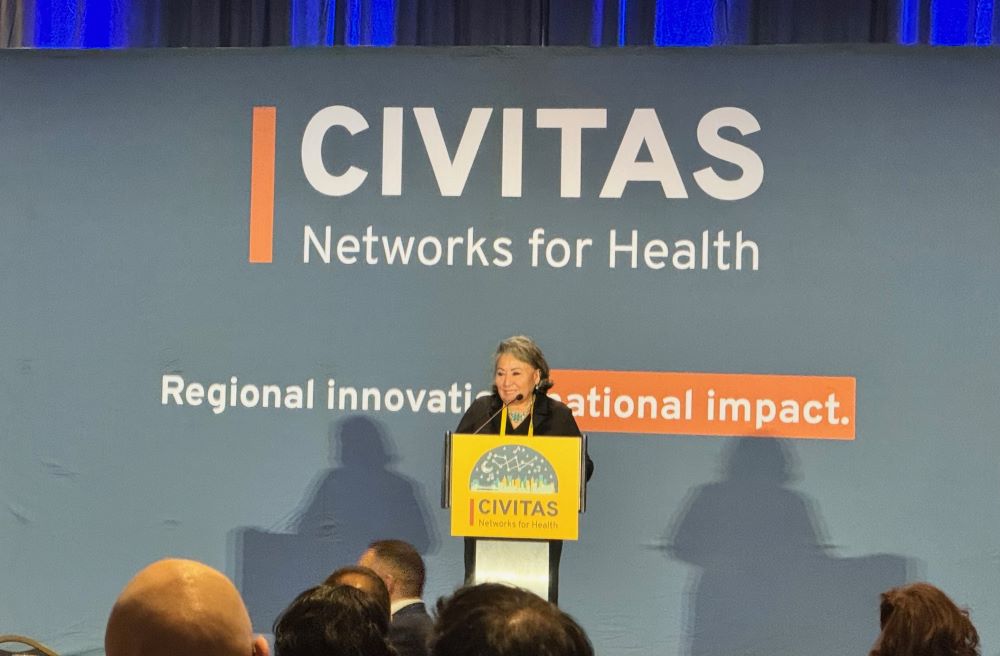
Roselyn Tso, Director of the Indian Health Service (IHS), shared the challenges and opportunities of data modernization within IHS, an organization that serves 574 federally recognized tribes across 37 states. The IHS system provides care to 2.8 million people—a population spread across rural and remote areas, from the Navajo Nation to villages in Alaska, even as far as the bottom of the Grand Canyon. IHS is the 17th biggest medical system in the country, which means they have a seat at the table and can help drive change.
A key theme of the session was bridging data and care delivery. IHS operates on an aging system, now over 40 years old, making it difficult to meet modern healthcare demands. Tso explained that this system must evolve to align with the changing needs of communities, addressing not just medical care but the “social drivers of health” like access to food, clean water, and transportation.
Tso highlighted severe challenges in delivering care. For example, tribal patients with critical needs, such as dialysis, often travel hours to access treatment, as seen on the 4-hour route from Billings to Fort Peck. In Alaska, rural clinics face vacancies due to the high cost of living and remoteness.
To overcome these hurdles, IHS has embraced creative partnerships. Tso noted collaborations with Walmart, leveraging their data-driven service locations to extend health services to Native communities. In Alaska, community health aide programs train locals to provide medical and dental care, a model IHS aims to expand nationwide to better support tribal healthcare needs with culturally aligned providers.
IHS is also making strides in addressing food insecurity. Often, federal commodity food packages are loaded with processed foods, and in remote locations such as Alaska, gallons of water cost $14, and cereal is priced beyond what most residents can afford. These factors drive economically challenged individuals to buy lower-cost processed food, leading to early child dental needs and other health issues. In collaboration with tribal leaders, IHS is encouraging local food production initiatives, moving away from federal commodity food programs, and funding farming initiatives. Tribal governments have taken the lead in building exercise and wellness centers to combat high rates of diabetes, which disproportionately affect Native communities.
Tso emphasized the importance of tribal self-governance. Currently, 60% of tribes manage their own healthcare systems, with trailblazing efforts such as the first medical school on Cherokee lands and the first cancer treatment center on the Navajo Nation. These successes highlight the potential of shifting control from federal agencies to tribal governments. “The federal government needs to get out of the way so tribes can run their own healthcare,” Tso remarked.
Modernized data systems are essential for tracking outcomes and advocating for funding from Congress. Tso explained that connected data not only improves care delivery but also strengthens the case for increased resources. With $3.5 billion in funding, IHS is focusing on improving water and sewer infrastructure while tackling health disparities, workforce shortages, and the effects of intergenerational trauma.



